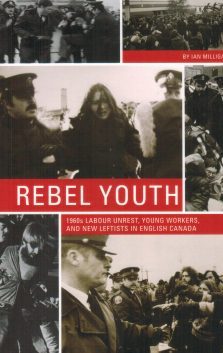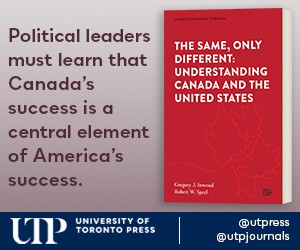Finally, the plain truth about Canada in the 1960s. Our collective memory of this decade is so coloured by American imagery of Vietnam and Martin Luther King, the distinctive Canadian experience is forgotten even by those who lived it. Ian Milligan, professor of history at the University of Waterloo, corrects the record through meticulous research and interviews.
It was the decade of the union. “Canada’s 1960s were profoundly shaped by labour,” Milligan writes. “Skyrocketing labour unrest captivated young people, their elders, the media, and governments alike.”
Most Canadians had never had it so good: full employment in an economy geared to wartime production without any casualties. Mining and manufacturing ran red-hot. “If you could walk almost, you could get a job at Inco,” one United Steelworkers organizer recalled. Sudbury mines hired 200 men a day.
The country was overwhelmingly young – half of Canadians were under 25 – and blue collar. Only 12 percent of baby boomers went to college or university. The decade of rebellion was a generational clash between long-hairs and hard hats. One recalls a Westinghouse factory in Hamilton, Ont.: “When I started working there in ’73 every young guy in the plant, almost 99 percent, were on dope and had long hair, and had all sorts of cultural revolution attitudes, you know? They listened to the same music, Led Zeppelin.”
“Young workers spearheaded rank-and-file opposition to managers and unions alike,” Milligan notes. “A surging economy had flooded large industrial employers with new recruits who had no traditional connection to union or employer and little sense of material deprivation.”
The result was extraordinary.
In 1966 the country lost more than 5 million work days to wildcat strikes and lockouts, a record to that time. When 1,300 members of the Canadian Brotherhood of Railway, Transport & General Workers threatened to shut down the St. Lawrence Seaway, cabinet agreed to a 30 percent wage increase. Seaway workers were back in 1968 with a demand for 20 percent more, including a doubling of holiday pay. “We are trying for a social breakthrough,” one told a reporter.
The post office hadn’t seen a strike since 1924 saw one in 1965, then in 1966, 1968, 1974, 1975 and 1978. In one wildcat strike at a Chrysler plant, six thousand autoworkers downed tools in a “jurisdictional dispute over welding torches,” as Milligan puts it. “Workers expected to their torches to be lit by the previous shift; when one group arrived and found them unlit, the men refused to light them themselves and walked out.”
Union greybeards were exasperated. “Dialogue in many cases has broken down because of the ‘generation gap’,” the president of the Ontario Federation of Labour lamented in 1969.
Donald MacDonald, president of the Canadian Labour Congress, was characteristically blunt: “Advocates of workers’ control want to use union workers as shock troops to establish the dictatorship of the proletariat in Canada. What that really means is that a few intellectuals would rule by telling workers what is good for them.”
Professor Milligan puts it smartly: “The Sixties need to be understood through the prism of labour, and our contemporary labour movement in many ways is a child of that period.”
By Holly Doan
Rebel Youth: 1960s Labour Unrest, Young Workers, & New Leftists In English Canada, by Ian Milligan; University of British Columbia Press; 252 pages; ISBN 9780-7748-26884; $32.95









